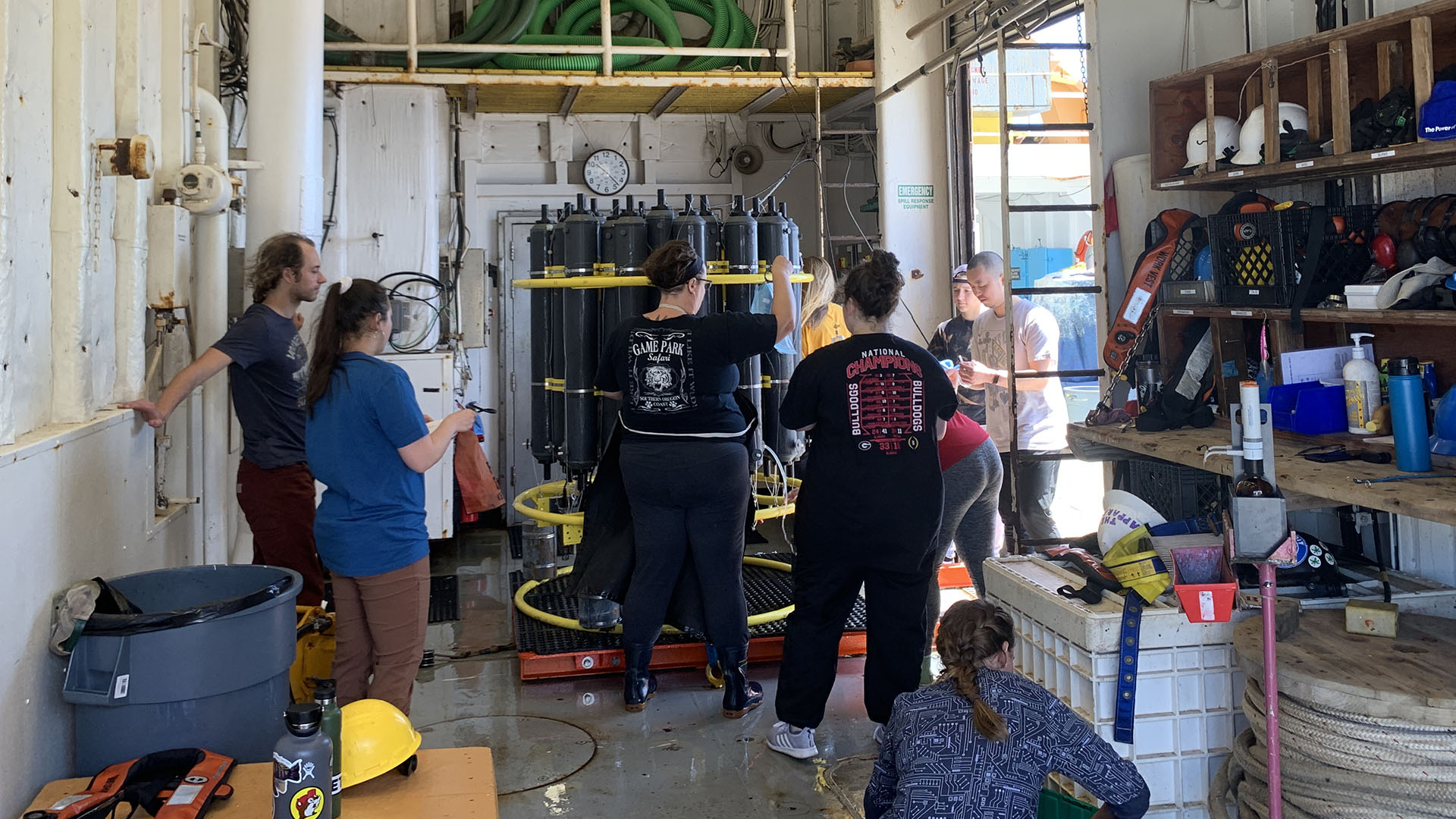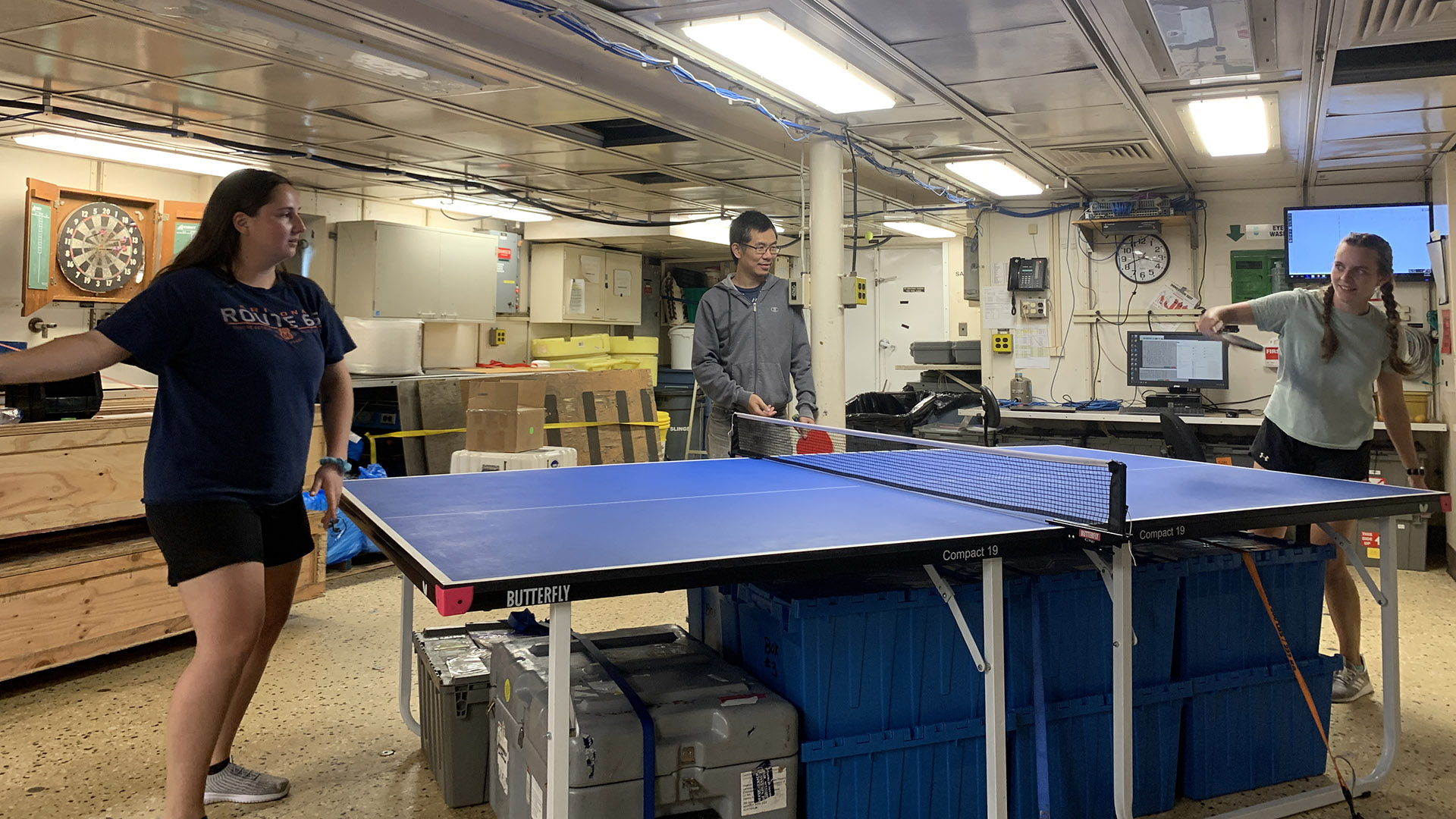March 13, 2023
by Ellen Park
On March 13th at 20:49 UTC, we crossed the equator, leaving the southern hemisphere and entering the northern one! This moment was something that many of the scientists onboard were eager to experience.

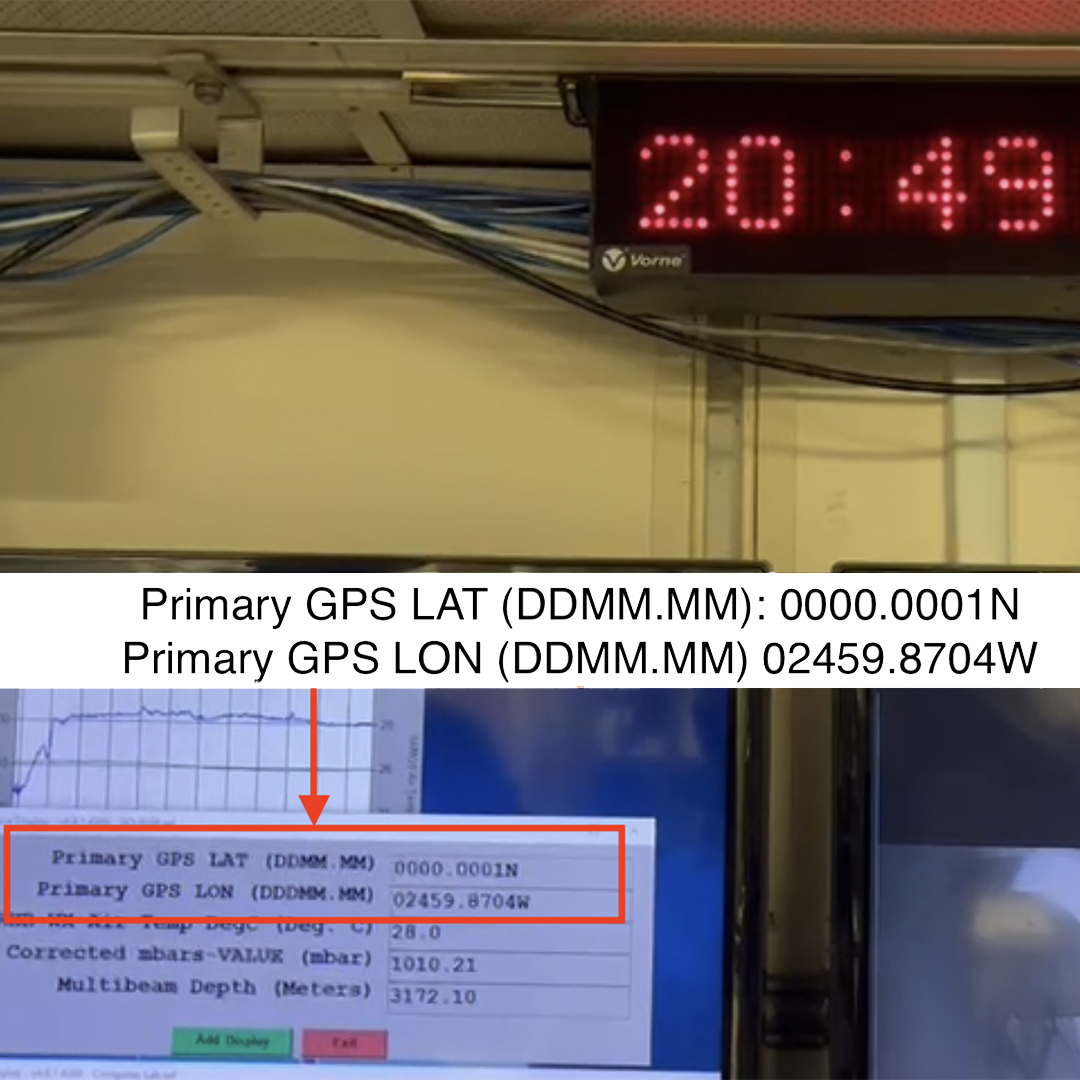
Equatorial Souvenirs
We not only documented this moment with photos, but we also celebrated it with the time-honored tradition of decorating Styrofoam cups to attach to the CTD for the cast (station 16) we had right at the equator. At station 16, the water depth was only roughly 3,600m, which is shallow in comparison to the many 5,000+m casts we have had on this leg. Nonetheless, the pressure that the Styrofoam cup experiences at this depth is still over 300 times the pressure we experience from the atmosphere on land. As a result, the cup shrinks quite dramatically compared to the original size. We are planning to do an experiment to see how the size varies between cups shrunk on this cast to those shrunk on the deepest cast of this leg, which is close to 6,000m deep.
Also, after completing sampling at the equator station, we were able to collect some of the remaining deep water from this cast to save as a souvenir in used salt standard bottles!
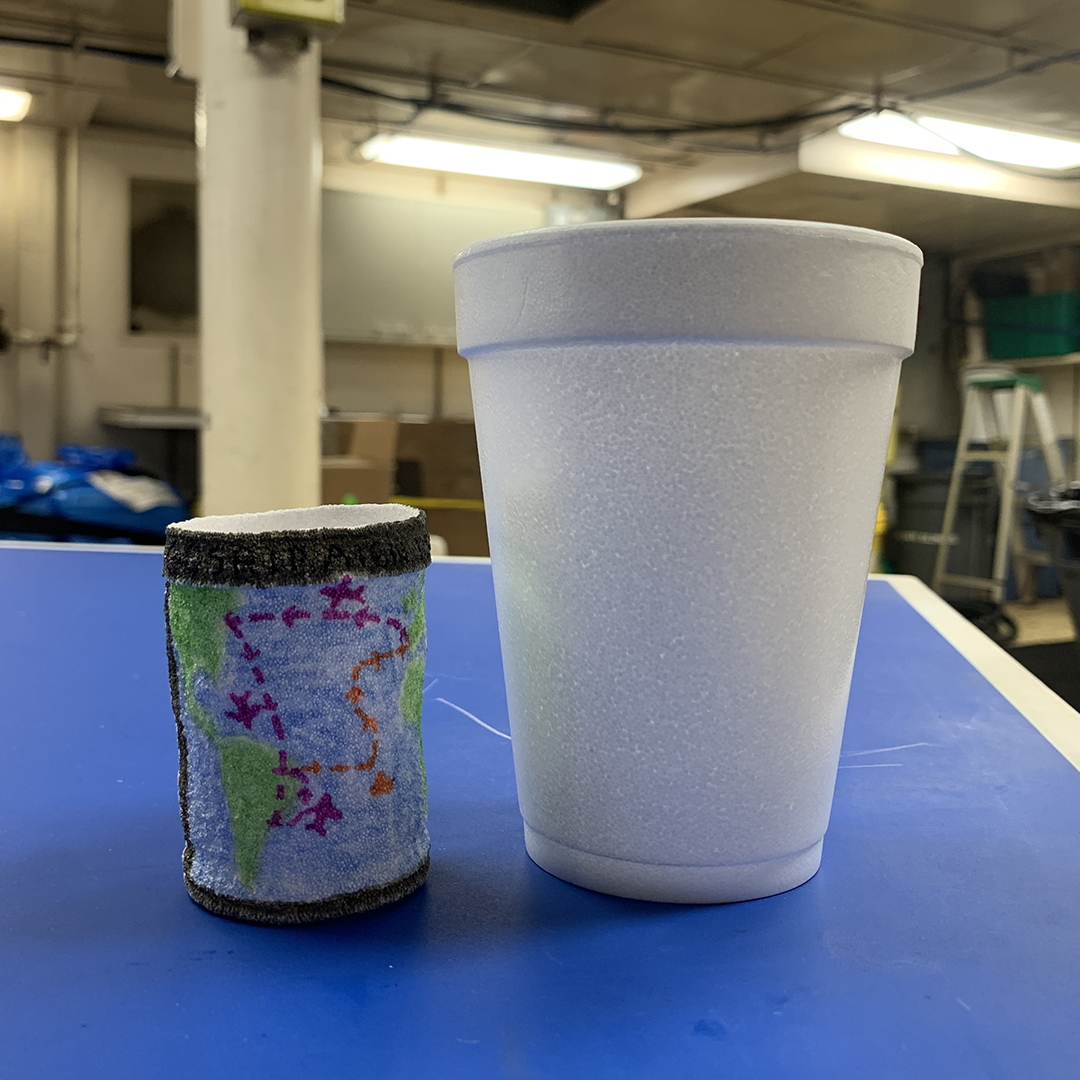
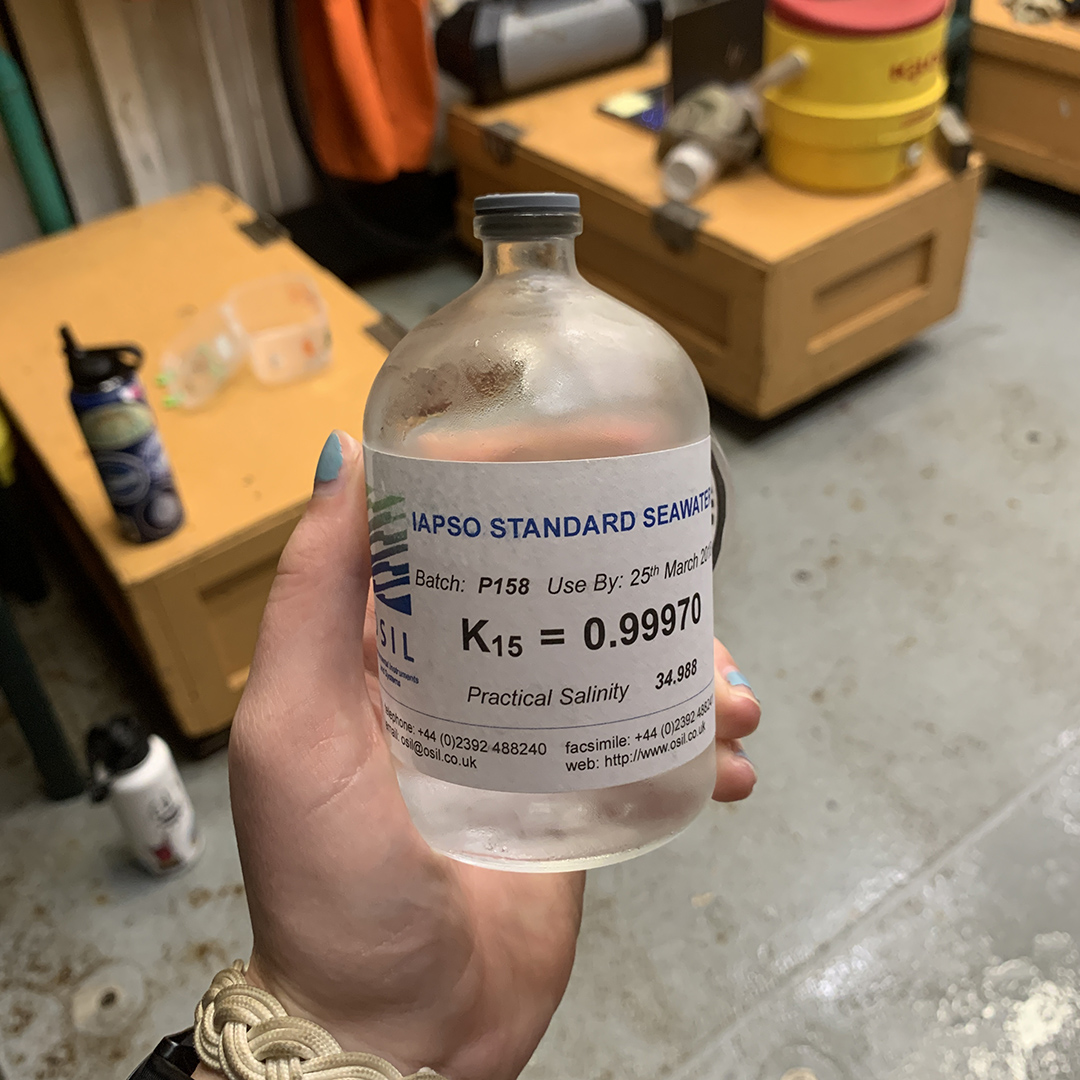
A quick recap on our travels to where we are now
It took us 7 days to reach the equator, with roughly half of this time dedicated to reaching the first station. Once we reached the first station, we had a bit of a rough start to science because the CTD was giving us some issues. After several frustrating hours of troubleshooting by the CTD team, eventually all the problems were resolved. Since then, science operations have been running smoothly, and everyone has found their rhythm. It’s a repetitive workflow: deploy and recover the CTD, collect and process samples, transit to the next station, and repeat. To keep things lively, we play music as we sample and play darts or ping pong in the main lab when we need a break.
